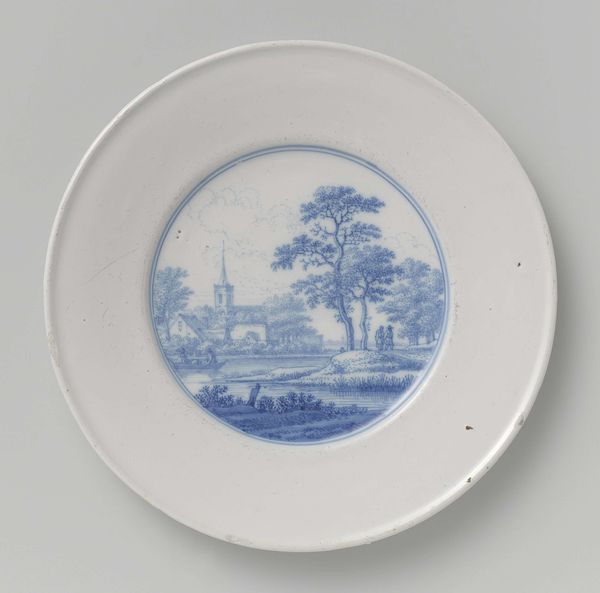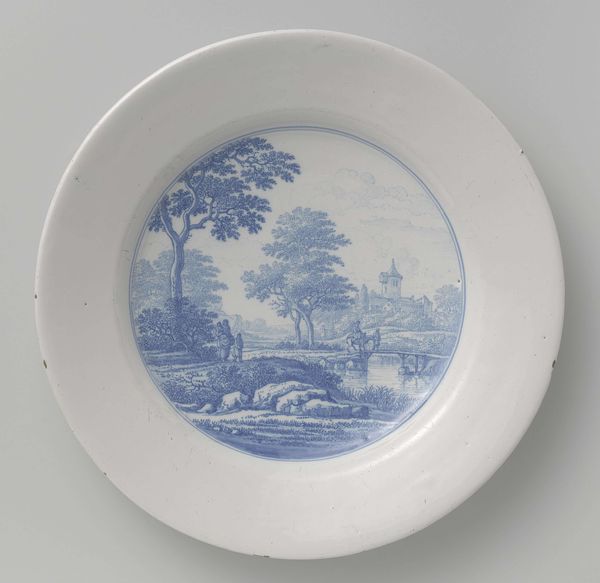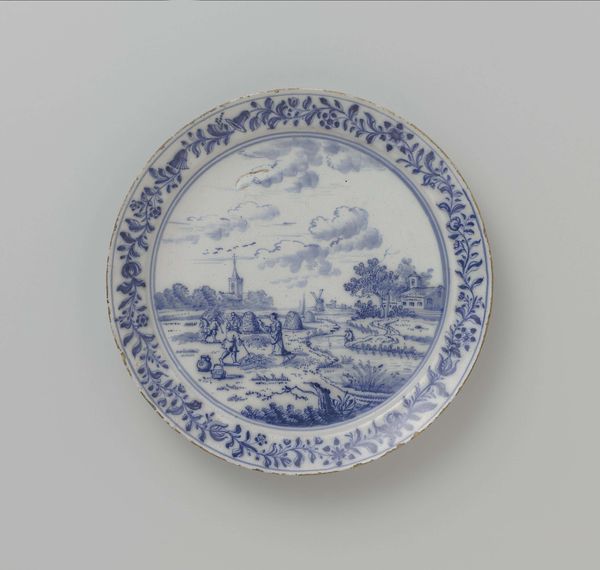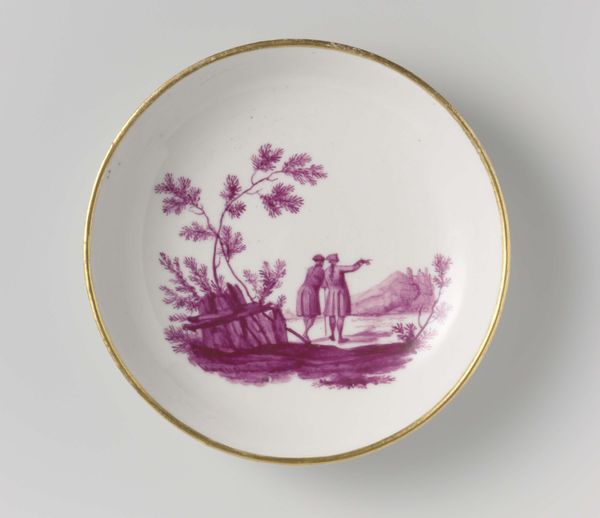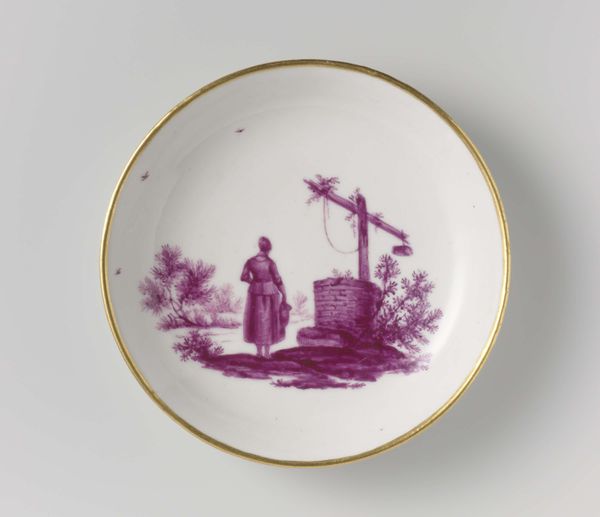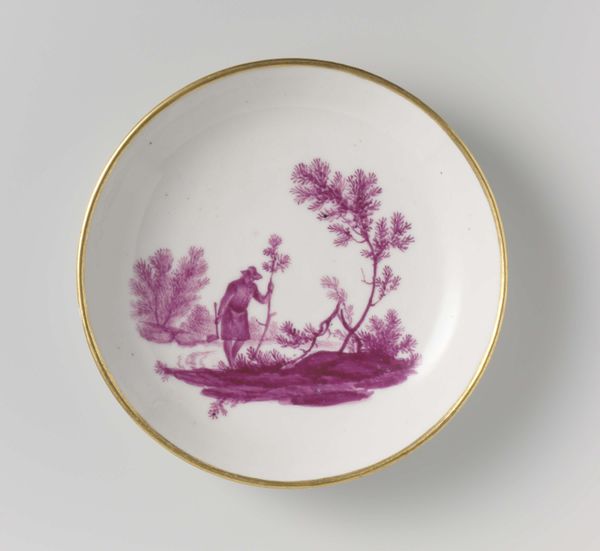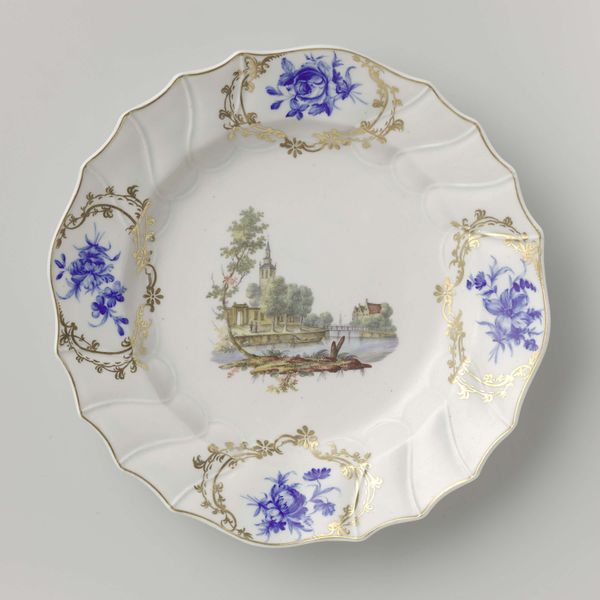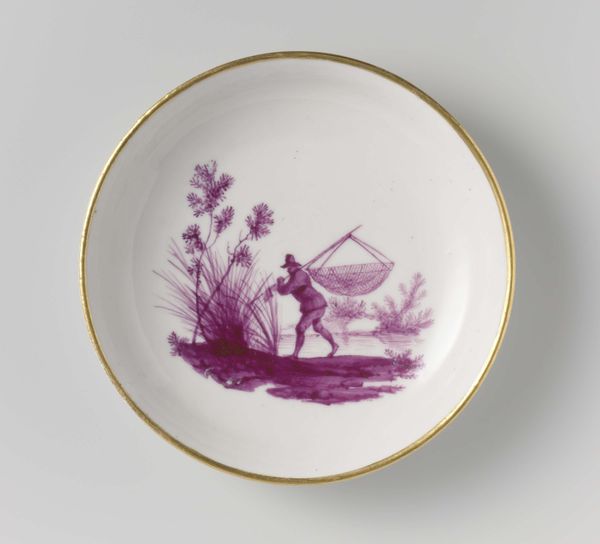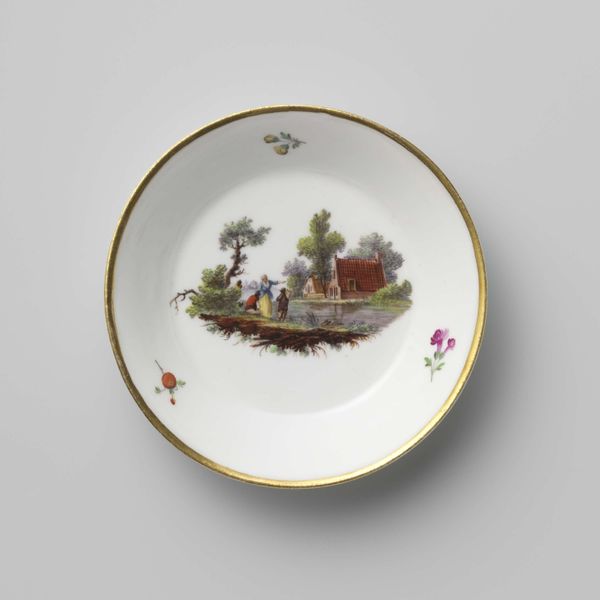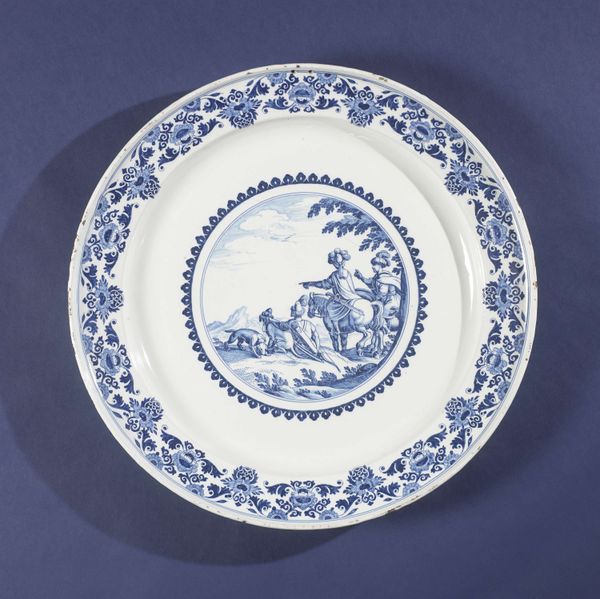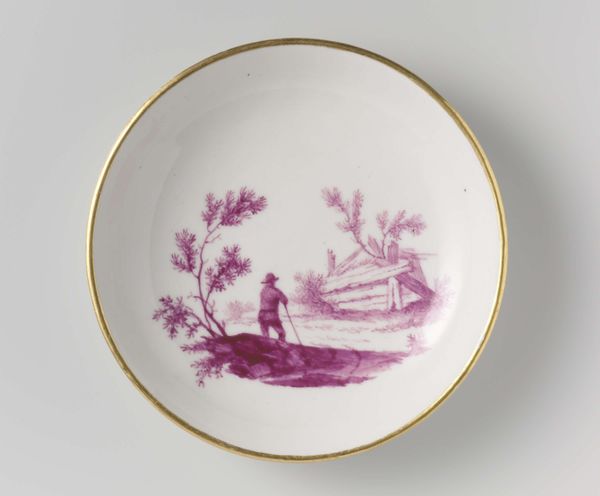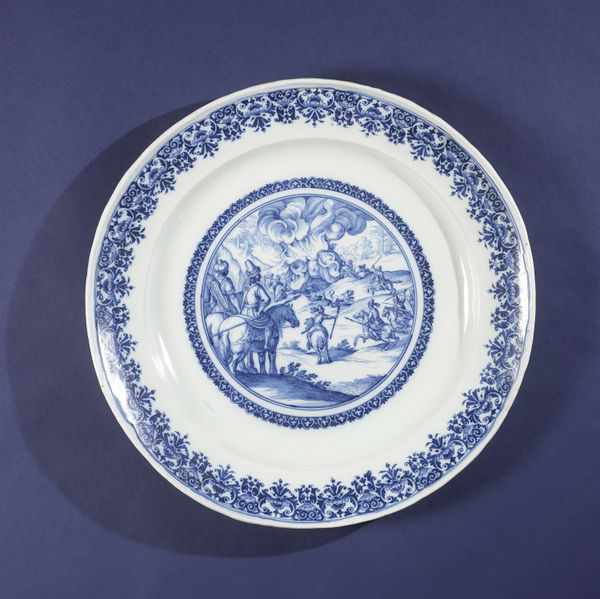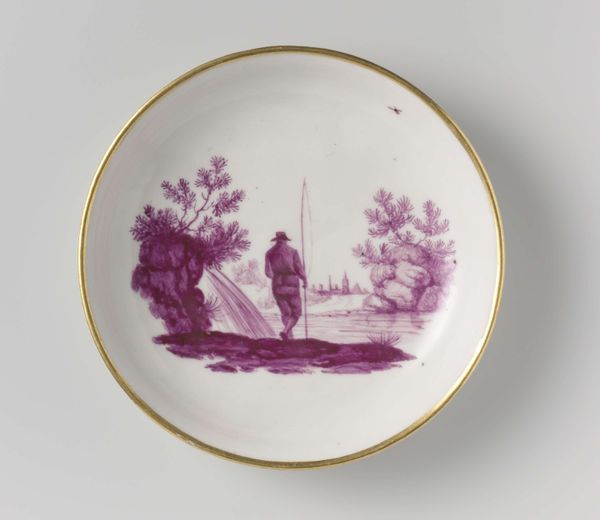
Bord met afbeelding van een ruiter in een landschap met brug, kerk en boerderij c. 1670 - 1700
0:00
0:00
drawing, print, etching, relief, ceramic, porcelain
#
drawing
#
dutch-golden-age
# print
#
etching
#
relief
#
landscape
#
ceramic
#
porcelain
#
stoneware
#
ceramic
#
genre-painting
Copyright: Rijks Museum: Open Domain
This plate depicts a rider in a landscape with a bridge, church, and farm made by Frederik van Frytom. Note how the rider on horseback here is not merely a figure in a landscape; he is a carrier of meaning. The rider represents the motif of the wanderer or the traveler, prominent in art since ancient times. Think of the equestrian statues of Roman emperors, symbols of power and dominion. Yet, consider how this symbol shifts. Here, the rider is smaller, more integrated into the landscape, less a symbol of absolute authority, more a part of a bucolic scene. The rider motif echoes through medieval tapestries and Renaissance paintings, each time adapting, reflecting the cultural psyche. In modern art, the lone rider might embody alienation, anomie, a quest for identity. This evolution is not linear but cyclical. The rider’s journey mirrors our own psychological landscape, resonating with our collective memories of exploration, conquest, and introspection.
Comments
No comments
Be the first to comment and join the conversation on the ultimate creative platform.
